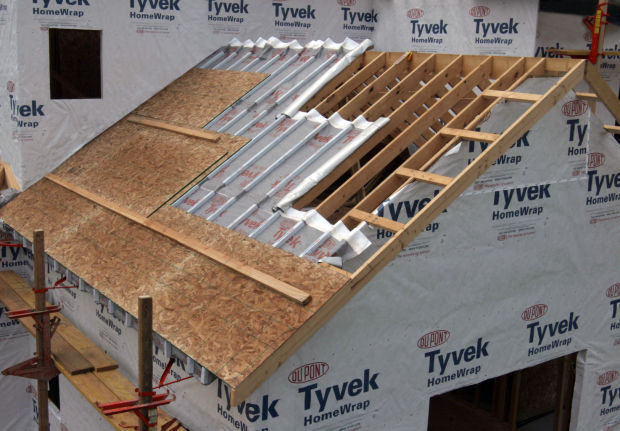Each year, thousands of Arizona residents email or call Rosie Romero’s radio show with questions about everything from preventing fires in their chimneys to getting rid of tree roots invading their sewer system. His goal is to provide answers that suit the specific lifestyle wherever someone lives in Arizona.
Q: We’re having a home built. Should we pay for an upgrade to have our new house wrapped with a higher-priced synthetic stucco wrap or go with the two-ply tar-paper wrap included in the builders’ basic bid?
A: Studies have shown that moisture inside a wall cavity can dramatically reduce the R-value efficiency of your insulation. While the traditional tar paper used in the siding assembly of most homes provides water protection from weather events, it does little to allow water vapor to escape through the overall wall assembly: the drywall, studs, insulation, exterior wall sheathing, tar paper, stucco foam and stucco. (The R-value, by the way, measures how effectively insulation or other building materials resist heat flow.)
The higher-priced synthetic wraps are designed to keep bulk water out, but on the other hand, these wraps allow the smaller water vapor molecules produced inside your home to penetrate to the exterior, thus keeping the inside of your walls dry and preventing moisture buildup. Your insulation inside the wall cavity will stay dry, allowing it to maintain its designed R-value.
For example, it’s been determined that a family of four can generate up to 70 pints of moisture in a 24-hour period in a typical residential environment. This is moisture produced by many sources: cooking, appliances, bathing, the people themselves, pets and plants. So the elimination of all of that moisture to the exterior is a valued benefit of the more expensive wrap.
Q: I have oak cabinets in the kitchen that I want to refinish. What is the best way to clean them up so that I can paint them?
A: Pull off one of the cabinet doors and take it to a paint store to get some tips. They will walk you through the different treatments, depending on whether he stains or repaints them and will tell you whether to brush on the new finish or spray it on.
Q: I recently started a grapevine from a cutting that I planted in a pot. Now I want to give it to a friend to start his own grapevine in his yard. Can I do that right now?
A: If your cutting has just started to leaf out, your friend should probably wait until the fall to put it in the ground. Keep watering and growing it in the pot until it is well-rooted.
Q: I have a fairly large house, but this winter I decided I could save on my natural gas bill by buying two electric space heaters to use in each of our bedrooms while turning off the gas heat. But then when I got my bill, I had saved $60 on natural gas heating, but the gas company had imposed some kind of extra fee called an EEP that ate up almost all my savings. What is this about?
A: It’s true from November to April you’ll see a line on your bill for what’s called the Energy Efficiency Weather Adjustment. Depending on how warm it gets and how much less gas you use, you have to pay a fee. On the other hand, if it’s extra cold, you won’t see a spike in your bill from using more gas.
As Southwest Gas explains it, when actual temperatures are colder than normal, the delivery charge portion of customer bills will be adjusted downward to reflect what the customer would have used under normal temperature conditions. When actual temperatures are warmer than normal, the delivery charge portion of customer bills will be adjusted upward to reflect what the customer would have used under normal temperature conditions.





